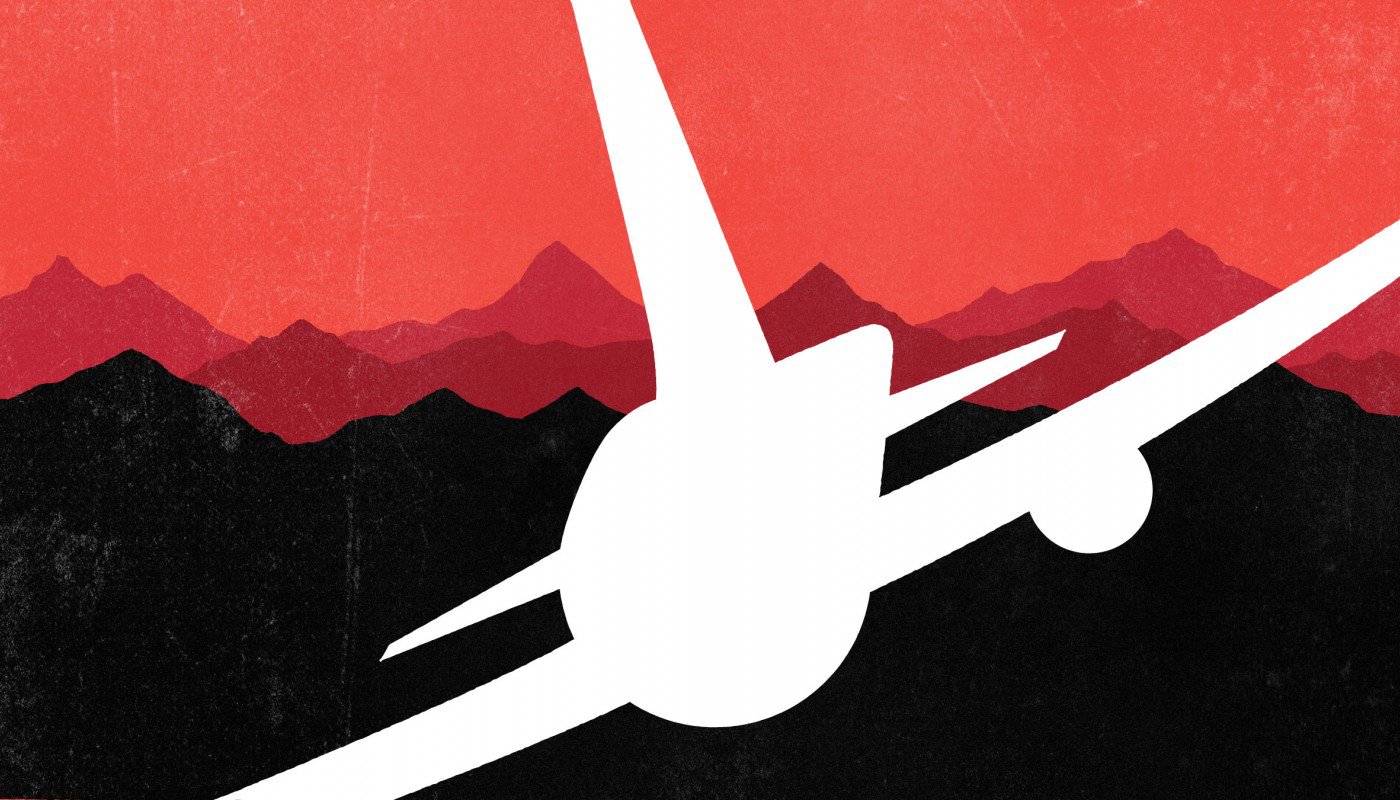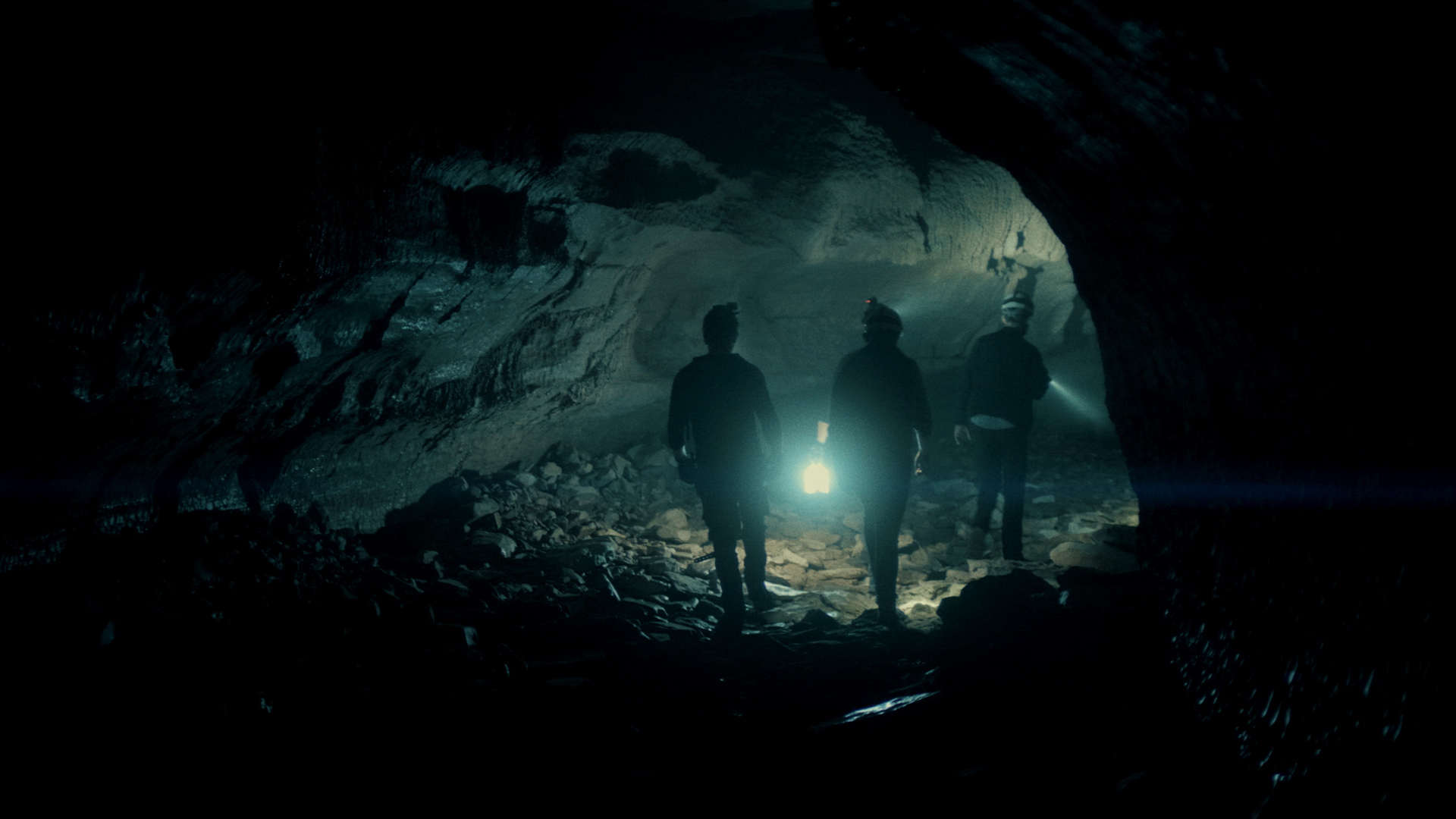
What Happened to Eastern Airlines Flight 980?
- October 26, 2016
- 0
By: Peter Frick-Wright
(Source: http://www.outsideonline.com/2126426/what-happened-eastern-airlines-flight-980)
On New Year’s Day in 1985, Eastern Air Lines Flight 980 was carrying 29 passengers and a hell of a lot of contraband when it crashed into the side of a 21,112-foot mountain in Bolivia. For decades conspiracy theories abounded as the wreckage remained inaccessible, the bodies unrecovered, the black box missing. Then two friends from Boston organized an expedition that would blow the case wide open.
By the time it crashed, Eastern Air Lines Flight 980 would have been just about ready to land. Beverage carts stowed, seat backs upright, tray tables locked. The 29 people on board would have just heard the engines change pitch and felt the nose dip slightly, seat belts tugging at their stomachs.
One imagines a focused cockpit. Pilot Larry Campbell was responsible for the safety of everyone on the flight, and this was just his second landing in the Bolivian city of La Paz. Copilot Ken Rhodes was a straightforward military man. No foolishness, especially when descending through a mountain valley in bad weather. Sitting behind both, flight engineer Mark Bird was a retired fighter jock. In the Air Force, he was known for buzzing the tower and other hijinks, but he’d joined Miami-based Eastern only a few months before, and during a tricky approach in the middle of a thunderstorm would not have been the moment to chime in.
On January 1, 1985, the mostly empty Boeing 727 was headed from Asunción, Paraguay, to Miami, with stopovers in Bolivia and Ecuador. Landing in La Paz was always difficult. Ground controllers there had no radar—and what navigational equipment they did have was spotty—so they relied on the cockpit crew to track their own position.
Why Couldn’t Investigators Reach the Crash Site?
 At 13,325 feet, El Alto International, which serves La Paz, is the highest international airport in the world. The air is so thin that planes land at 200 miles per hour because they would fall out of the sky at the usual 140. Air brakes find less purchase here, so the runway is more than twice the normal length. The airport is so high that, as the plane dropped toward La Paz, the pilots would have worn oxygen masks until they reached the gate, per FAA regulations. Passengers would have felt the altitude’s effects as the cabin depressurized: increased heart rate, deeper breaths, fuzzy thoughts.
At 13,325 feet, El Alto International, which serves La Paz, is the highest international airport in the world. The air is so thin that planes land at 200 miles per hour because they would fall out of the sky at the usual 140. Air brakes find less purchase here, so the runway is more than twice the normal length. The airport is so high that, as the plane dropped toward La Paz, the pilots would have worn oxygen masks until they reached the gate, per FAA regulations. Passengers would have felt the altitude’s effects as the cabin depressurized: increased heart rate, deeper breaths, fuzzy thoughts.
The last anyone heard from the jet was at 8:38 P.M. Eastern time. According to ground controllers, the flight was about 30 miles from the airport and cruising on track at roughly 20,000 feet. It was cleared to descend to 18,000 feet when it plowed straight into a mountain.
Mount Illimani, a 21,122-foot mass of rocks and glaciers rising from the eastern edge of Bolivia’s Altiplano region, towers over La Paz. The Andean mountain is so textured by ridgelines, high peaks, and shadows that, viewed from the city, it seems to move and change shape throughout the day.
Flight 980 hit nose first on the back side of Illimani, just below the summit. It probably cartwheeled forward, the fuselage bursting and splattering across the mountain like a dry snowball hitting a tree. Nearby villagers said it shook the whole valley. The airport’s radio registered only a single click.
It took a full day to locate the wreckage. Once the Bolivian air force saw it on the peak, it mobilized a team to get to the crash site, but a storm had dumped several feet of snow, and avalanches turned them back. The Bolivian team was soon followed by representatives of the U.S. embassy in La Paz and those from the National Transportation Safety Board (NTSB) and the Airline Pilots Association (ALPA), the two organizations responsible for investigating crashes by U.S. airlines. But none of them were acclimatized enough to do any climbing. The agencies asked to borrow a high-altitude helicopter from Peru, but Bolivia wouldn’t allow it inside the country.
“The Bolivian government did not want the world to know that the Peruvians had a better helicopter than they did,” says Bud Leppard, chairman of the ALPA Accident Analysis Board, who departed for La Paz immediately after hearing about the crash. Eventually permission was granted, and Leppard devised a plan to reach the crash site by jumping off the helicopter as it flew above the ground at 21,000 feet, then skiing down to the plane. Better judgment prevailed when he realized that the chopper couldn’t hover at that altitude.
Sikorsky Aircraft shipped an experimental high-altitude helicopter to Bolivia that could drop Leppard off at the crash site, but the mechanics sent to reassemble it were so altitude-sick upon landing in La Paz that several days passed before they could do any work. When they did get it flying, bad weather at the summit kept everyone in the chopper.
One Bolivian climber, Bernardo Guarachi, apparently made it up to the wreckage on foot two days after the crash but then said almost nothing about his findings. When the Bolivian government filed an official—but inconclusive—crash report a year later, Guarachi wasn’t named in it. It was unclear who’d sent him in the first place.
Two months after the crash, in March 1985, a private expedition of Bolivian alpinists commissioned by Ray Valdes, an Eastern flight engineer who would have been on board if he hadn’t swapped shifts, successfully navigated the treacherous mix of rock and ice. The small team encountered wreckage and luggage, but they couldn’t locate the plane’s black box. Stranger than that, no one found any bodies at the crash site. Or blood.
Another private expedition went up in July 1985, followed by NTSB investigators in October, but neither was able to spend more than a single day at the crash site.
In all, at least five expeditions have climbed Illimani in search of the wreckage over the past 30 years. None of them found any bodies or flight recorders, nor could anybody establish what brought down the plane. Officially, it was designated a “controlled flight into terrain,” which means it couldn’t be blamed on a bird strike or an engine malfunction or hijackers. The NTSB ultimately filed its own report to supplement the Bolivian one, but it came to the same flat conclusion: the plane was destroyed because it ran into a mountain.
As time passed, however, details emerged that invited speculation among South American journalists, the families of the victims, and anyone else still following the story. The flight crashed because of an equipment malfunction; no, the crew was new to the route and flying in bad weather; no, the Paraguayan mafia blew it up because the country’s richest man was on board; no, Eastern Air Lines was running drugs; no, it was an attempted political assassination—someone took down the flight to get at the U.S. ambassador to Paraguay, Arthur Davis, who was supposed to be aboard but changed his plans at the last minute.
The thing is, even the more outlandish theories had some ring of truth. Five members of Paraguay’s prominent Matalón family, who built an empire selling home appliances, were on the flight. The wife of the U.S. ambassador to Paraguay—Marian Davis, who had continued on without her husband—died in the crash. In 1986, a criminal indictment against 22 Eastern baggage handlers revealed that, for three years, the airline had indeed been used to deliver weekly shipments of 300 pounds of cocaine from South America to Miami. (Eastern declared bankruptcy in 1989 and dissolved in 1991.)
So the mystery deepened. Theories festered and grew. Where were the flight recorders? Where were the bodies?
One of the more comprehensive explanations came from George Jehn, a former Eastern pilot who published a 2014 book about the crash called Final Destination: Disaster. In it he theorizes that a bomb went off, depressurized the plane, and sucked all the bodies out of the cabin. Then he speculates that either Eastern or the NTSB hired Bernardo Guarachi to get rid of the flight recorders as a way of halting further inquiry into the crash, for fear that a full investigation would have revealed that the airline was running drugs for President Ronald Reagan. It’s a convoluted plot, too far-fetched to take seriously, but seductive as hell to those looking to explain the inexplicable.
“Not one body, not one body part, no bloodstains. Why not?” Jehn said when we spoke in May. “It’s the single greatest aviation mystery of the 20th century.”
But the case of Flight 980 is about as cold as they come. Any remaining clues have been locked in the ice of a Bolivian glacier for decades. Trying to solve it would combine the dangers of high-altitude mountaineering with the long odds of treasure hunting—a losing hand almost every time. So here’s another question worth asking: What sort of foolhardy seeker suddenly takes an interest in a 30-year-old plane crash?
Dan Futrell is an affable, loud, heart-on-his-sleeve kind of guy. Impulsive. Persistent. In college he was the Gonzaga bulldog mascot at basketball games, dancing and making costumed mischief during time-outs. After graduating in 2005, he served two tours in Iraq. He completed Army Ranger School but decided to move on to civilian life. Now 33, he manages people and spreadsheets for an Internet company in Boston, where he lives.
To say that he misses the physical challenge of soldiering is an understatement, but that’s his preface when you ask him what kicked off his interest in the crash. Since leaving the Army, he’s made a habit of regularly scheduling sufferfests—he once took aim at all seven peaks in New England named after presidents and bagged them in one day. A little more than a year ago, he stumbled across a Wikipedia list of unrecovered flight recorders. Next to Eastern Air Lines Flight 980, the article listed “inaccessible terrain” as the reason the flight recorders had never been found.
“Challenge accepted,” he wrote on his blog.
Isaac Stoner, Dan’s roommate, was the first to hear his let’s-go-find-it sales pitch. Though they’ve known each other only two years, they act and argue like brothers. But where Dan has dark hair, weary eyes, and an expressive face with many angles, Isaac has the blond hair and classically handsome features of a small-market news anchor. Dan is spontaneous and emotional; Isaac is calm and analytical. After the Army, Dan attended grad school at Harvard; Isaac worked in biotech and then went to MIT.
Finding the box sounded pretty good to Isaac. And it took priority over their other screwball ideas, like running a marathon in a suit or attempting to set the world record in the pieathlon, a 3.14-mile race in which you eat a whole pie.

Most people still tracking this plane crash have deeply personal, often tragic reasons to care about it but very little capacity for travel and risk. Dan and Isaac had no reason but the adventure. They had no sponsorships, benefactors, or Kickstarter funding—just a crazy plan, a bit of money in the bank, and two weeks’ vacation.
The first step was to divvy up the responsibilities. Dan was in charge of learning about the crash and its history, figuring out where to start searching, and blogging about the trip. Isaac researched the altitude, weather, skills they’d need to learn, and contingencies if things didn’t go smoothly—in short, he was tasked with keeping them alive.
They embarked on a five-month training plan that consisted of running stairs at the Harvard football stadium and sleeping in a Hypoxico altitude-simulation tent. Four weeks before wheels up, a friend of a friend sent me a link to their blog and relayed that they’d be happy to have me along. Two days later, I was on the phone ordering my own altitude tent.
Our primary search area was not the crash site itself, but a roughly one-square-mile patch of glacial moraine 3,000 feet below it. Flight 980 hit a saddle on the south side of Illimani, near the top, and for the past 31 years plane parts have been sliding down the mountain in icefalls, plunging over a cliff, and then slowly grinding downhill toward a glacier at the bottom.
The Bolivian summer and fall of 2016 (the Northern Hemisphere’s winter and spring) had been warm and rainy, and we were told that the glacier had melted far up the mountain. The moraine—and the wreckage—was more exposed than ever. We planned to spend four days searching the debris field at about 16,000 feet, then another searching the original crash site at 19,600 feet.
Which is how we find ourselves standing amid a heap of rental gear in a climbing shop in La Paz, three days after leaving the U.S. Off to one side, I’m nauseous and dizzy from climbing a single flight of stairs. We’re at 13,000 feet, but to me it feels like the summit of Everest. Isaac says it looks like I got hit by a large bus. He says he got hit by a smaller one.

Meanwhile, our climbing guide, Robert Rauch, has fallen asleep in his camping chair. Fifty-nine years old, born in Germany but living in Bolivia for the past 20 years, Robert has pioneered more than a hundred routes in the country, including three on Illimani’s south side. His house has an entire room devoted to equipment for different kinds of pull-ups. He does not own a couch. Dan calls him “the most interesting guide
in the world.”
Rauch had taken an interest in the crash as well. He’d traveled through the debris field while scouting routes on Illimani and thought that a concerted, methodical search of the area might turn up the recorders and bodies. “The whole area will lie in front of us like a Google map,” he’d written in an e-mail.
A few minutes later, our expedition’s cook, Jose Lazo, shows up. He’s Aymara—one of Bolivia’s indigenous peoples—and he and Robert are soon telling stories about the time Jose was chased by a bear, the time Robert was chased by a condor, the time an angry mob chased the two of them out of Jose’s village and they fled 300 miles in seven days, crossing jungles and alligator-infested rivers to get back to La Paz. Dan calls him “the most interesting cook in the world.”
Back in the store, Isaac is trying to convince Dan to rent warmer snow pants; Dan is rolling his eyes. Robert is down to his skivvies, having dropped trou in the middle of the shop to rub his sore left knee with an herbal balm he bought on the street.
I’m still feeling queasy, resting on a box of something or other, when a climber with a man bun sits next to me and says that a week of wind sprints before we start will help me adapt to the altitude.
“When do you leave?” he asks.
“Tomorrow morning.”

